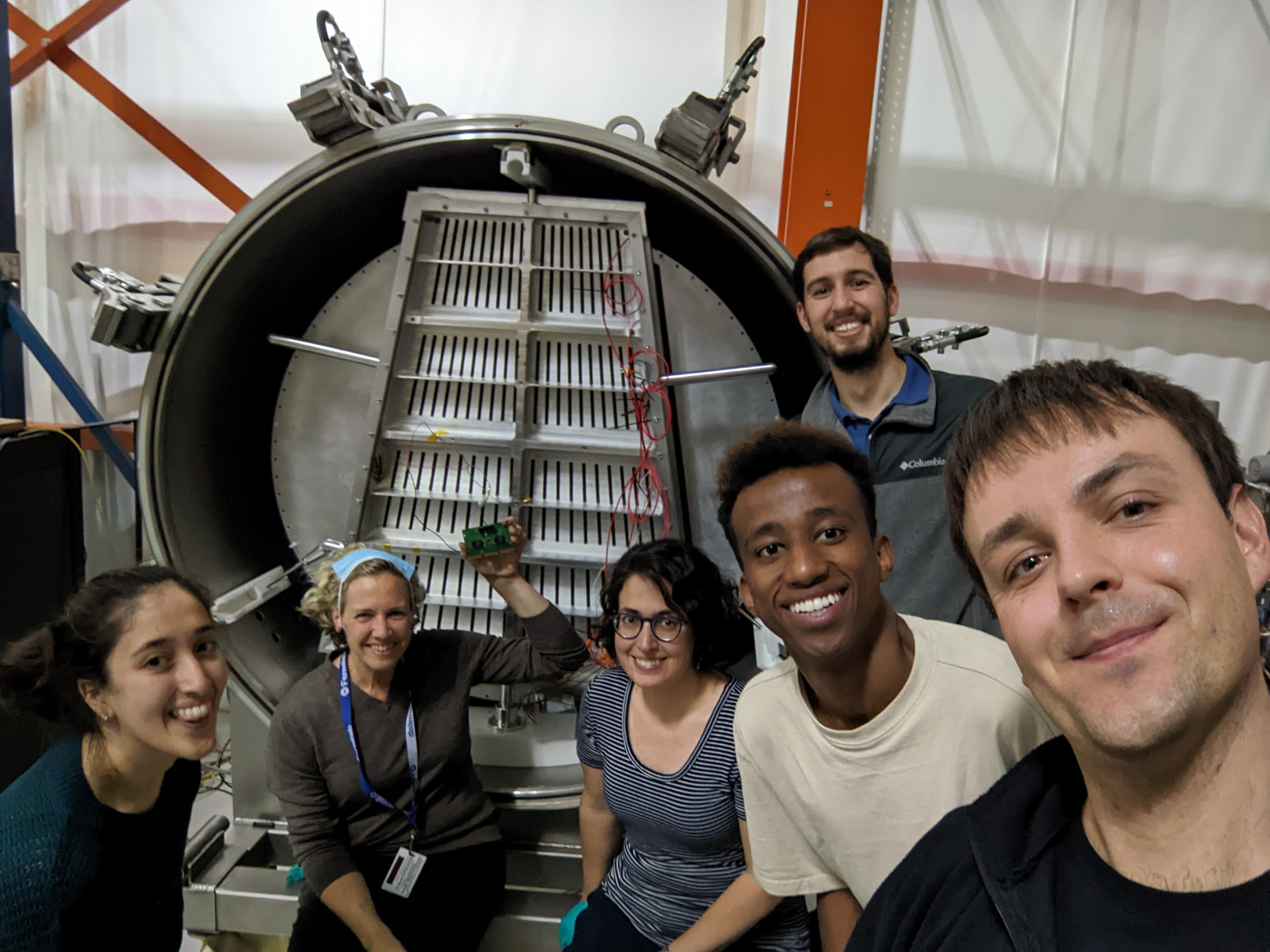The Deep Underground Neutrino Experiment (DUNE) is a leading-edge, international experiment for neutrino science and proton decay studies. Discoveries over the past half-century have put neutrinos, the most abundant matter particles in the universe, in the spotlight for further research into several fundamental questions about the nature of matter and the evolution of the universe - questions that DUNE will answer.

DUNE will consist of two neutrino detector complexes placed in the world’s most intense neutrino beam. One detector complex will record particle interactions near the source of the beam, at the Fermi National Accelerator Laboratory in Batavia, Illinois.
A second, much larger, detector complex will be installed more than a kilometer underground at the Sanford Underground Research Laboratory in Lead, South Dakota - 1,300 kilometers downstream of the source. These detectors will enable DUNE scientists to search for new subatomic phenomena that could transform our understanding of the universe and the role of neutrinos in it.
Could neutrinos be the reason that the universe is made of matter rather than antimatter? By exploring the phenomenon of neutrino oscillations, DUNE seeks to revolutionize our understanding of neutrinos and their role in the universe.
With the world’s largest cryogenic particle detector located deep underground, DUNE can search for signs of proton decay. This could reveal a relation between the stability of matter and the Grand Unification of forces, moving us closer to realizing Einstein’s dream.
DUNE’s observation of thousands of neutrinos from a core-collapse supernova in the Milky Way would allow us to peer inside a newly-formed neutron star and potentially witness the birth of a black hole.
Imperial contribution to DUNE
Imperial scientists play a key role in designing the data acquisition systems for DUNE both at the far and near detectors and in the construction of the Anode Planes Assemblies (APAs) for one of the far detector modules. We have particular involvement in control and configuration, data quality monitoring, and the interface with near detector electronics where Profesor Alex Tapper, and Drs Pierre Lasorak and Patrick Dunne respectively have leadership positions within the DAQ consortium.
We also participate in the construction of the anode plane assemblies (APAs) with a focus on providing quality control for these large-scale structures, made of steel frames with several thousand copper-beryllium wires for the detection of signals. Imperial College with Dr. Pip Hamilton, Dr. Anyssa Navrer-Agasson, and Professor Söldner-Rembold are responsible for testing these structures after they have been delivered to the Neutrino Platform at CERN.
Imperial is also heavily involved in developing the technology for Phase II of DUNE. We work on the design and construction of the high-pressure gas TPC that will form part of the Phase II more capable near detector. In Particular, we are carrying out tests of the readout chambers that will be used for this detector as well as designing the data acquisition electronics and analysing data from beam tests. We also participate in the development of a novel integrated light-charge pixel readout for the Phase II far detector modules.
Additionally, we play a large role in physics analysis using the MaCh3 oscillation analysis framework to contribute to the long-baseline analysis group. The team maintaining and developing this framework is led by Dr Patrick Dunne and Dr Edward Atkin is its technical coordinator.

People involved
Contacts
Dr Patrick Dunne
/prod01/channel_3/media/images/non-standard-dimensions/dunne.jpg)
Dr Patrick Dunne
Assistant Professor
Professor Alex Tapper
/prod01/channel_3/media/images/non-standard-dimensions/tapper.jpg)
Professor Alex Tapper
Professor
Professor Stefan Soldner-Rembold
/prod01/channel_3/media/images/non-standard-dimensions/stefan.jpg)
Professor Stefan Soldner-Rembold
Professor
Current group members: Tiago Alves, Edward Atkin, Patrick Dunne, Pip Hamilton, Alex Hergenhan, Hank Hua, Naseem Khan, Pierre Lasorak, Anyssa Navrer-Agasson, Jude Martin, Marvin Pfaff, Pawel Plesniak, Stefan Söldner-Rembold, Alex Tapper
